Posted by Teresa on December 21, 2010 under Landlord Tenant Lawsuits | 
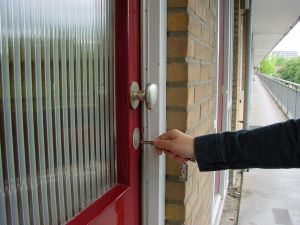 A recent case in Florida shows the U.S. Department of Housing and Urban Development (HUD) has little tolerance for racial discrimination against tenants. In this case, HUD charged the owners of a single-family home in Gibsonton, FL, with violating the Fair Housing Act (FHA). The charges include engaging in discriminatory housing practices for reneging on an agreement to rent the house to a woman and her children because they are African American. It also includes charges that the owners used racial slurs when referring to and addressing the family.
A recent case in Florida shows the U.S. Department of Housing and Urban Development (HUD) has little tolerance for racial discrimination against tenants. In this case, HUD charged the owners of a single-family home in Gibsonton, FL, with violating the Fair Housing Act (FHA). The charges include engaging in discriminatory housing practices for reneging on an agreement to rent the house to a woman and her children because they are African American. It also includes charges that the owners used racial slurs when referring to and addressing the family.
Most landlords are very familiar with the FHA, which bars discrimination against persons based on race, color, national origin, religion, sex, familial status (including children under the age of 18 living with parents or legal custodians), pregnant women (and people securing custody of children under the age of 18), and handicap (disability).
In the Florida case, the suit alleges that the owners initially agreed to rent the home to an African American woman and her three children. Two days after they moved in, the owner refused their rent payment. He then ordered the children out of the house while their mother was at work, and changed the locks. A relative found the kids about a quarter mile from the house, under a highway underpass.
Subsequent interactions between landlord and tenant included several uses of a racial slur, according to the tenant. The owners by then had rented the house to another tenant.
The case will be heard by an administrative law judge, who may award damages if he or she finds discrimination has occurred. The judge may impose punitive damages to deter further discrimination, as well.
The lesson here is nothing new: discriminating against a current or potential tenant on the basis of race is illegal. Landlords must be blind to race, disability, country of origin, religion, family status and color. And those who aren’t will face the consequences.
Posted by Teresa on December 16, 2010 under Housing Trends, Landlord Tips | 
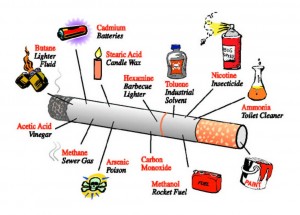 A new study in Pediatrics suggests that children living in apartment buildings are at higher risk of exposure to passive smoke than children living in detached houses. Experts say that components of tobacco smoke that are harmful to children can seep through apartment walls, then be absorbed by furniture, curtains, clothing and carpet. This makes vulnerable children unable to avoid exposure.
A new study in Pediatrics suggests that children living in apartment buildings are at higher risk of exposure to passive smoke than children living in detached houses. Experts say that components of tobacco smoke that are harmful to children can seep through apartment walls, then be absorbed by furniture, curtains, clothing and carpet. This makes vulnerable children unable to avoid exposure.
The study focused on 5,000 children who live in smoke-free households, including detached houses, duplexes and apartment buildings. Researchers looked for cotinine, a product of nicotine and a highly sensitive marker for tobacco, in the children’s blood. The study found that overall, 73% of the kids were exposed to tobacco. Of children who live in apartment buildings, 84.5% had cotinine levels indicating tobacco exposure, while only 70.3% of children living in detached homes did. For children in semi-attached or duplex homes, the figure was 79.6%.
These numbers suggest that no matter where they live, children have no control over second-hand smoke. But in apartment buildings, the chance of exposure is much higher than for kids in detached homes. No matter who is smoking, even if they are in an apartment on the next floor or down the hall, the chemicals and carcinogens travel through ventilation systems, shared walls and ductwork.
Other findings were that tobacco contaminants were highest in children under 12, those who are black and those who live below the poverty level. While parental smoking is the most common source of secondhand smoke exposure, the new study shows that parents even the children of nonsmoking are exposed to these harmful substances.
While it’s too early to know what ramifications studies like this will have on legislation, it’s not too far outside the realm of possibility to imagine that rental property owners who allow smoking in their units could, at some point, be held responsible for damages to non-smokers’ health. In a perfect world, no one would be exposed to others’ harmful habits—especially children who have absolutely no choice in the matter. Until then, rental property owners can convert their properties to smoke-free housing. This study could be the most compelling reason to do so ever.
Posted by Teresa on December 14, 2010 under Landlord Paperwork and Forms, Landlord Tips | 
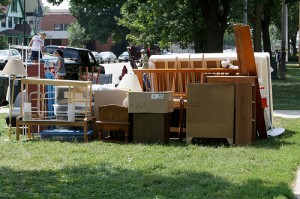 Many tenants notify landlords of their plans to move at the end of a lease by mentioning it in passing. Others assume that, if they haven’t signed a new lease, the landlord knows they are moving and they don’t need to notify.
Many tenants notify landlords of their plans to move at the end of a lease by mentioning it in passing. Others assume that, if they haven’t signed a new lease, the landlord knows they are moving and they don’t need to notify.
It’s a good idea to require tenants to provide a written notice of their intent to move. Many states require it, and if you use a well-written lease, it probably does as well.
The Advantages of Written Notices
Requiring tenants to put their intentions in writing is a good idea for several reasons:
- It eliminates the mix-up that can occur with verbal notifications
- It keeps the landlord/tenant relationship more businesslike
- It may be state law
- Written notices leave nothing to the imagination
- You won’t forget the tenant’s move-out date, which can lead to problems
- You’ll have time to prepare the security deposit return or deductions
What to Include on a Tenant’s Notice of Intent to Vacate Unit
Use a simple form, either one you obtain online or one you create yourself. You can provide it to tenants at lease signing, although it’s not likely they’ll keep it around long enough to turn it in at the end of the lease. Many landlords provide a form to tenants 60 or 90 days before the lease is up, with instructions to return it within 30 days of the end of the lease, if they plan to move.
The form should include:
- The date the form was completed;
- The name of the landlord or property management company;
- The address of the rental unit;
- Legal language including: The undersigned Tenant (name) hereby gives written notice of intent to vacate the rental unit at (address) on (date);
- A statement that the tenant understands they are responsible for rent until the end of the current lease or the day they vacate the unit, whichever is later;
- A statement that in accordance with the lease, the landlord is allowed reasonable access with advance notice to show the rental unit to prospective renters or contractors;
- A line for the tenant to sign and date the form.
As you can see, a thorough tenant move-out form covers all the bases: the date of the move-out, the day the rent is to be paid through, and permission to show the unit or allow access to workers.
Landlords who want even more information can include a short survey on the form, asking why the tenant is moving and if there is anything that could have been done to keep him or her as a tenant. This type of feedback is extremely valuable!
Pre-screen all tenants as part of your standard application process. Background and credit checks will help ensure you rent to qualified tenants. For more landlord resources, including forms and information on tenant screening, turn to E-Renter.com.
Posted by Teresa on December 7, 2010 under Tenant Credit Checks, Tenant Screening & Background Checks | 
 Why Pre-Screen Tenant Applicants?
Why Pre-Screen Tenant Applicants?
There are several advantages to screening tenants prior to signing a lease. One is that you can avoid discrimination issues by applying the same approval standards to every lease applicant—including a standard background and credit check. Another advantage is the reduction of risk. Why take a chance on a tenant who could have a history of evictions or an income that cannot support the rent? Mitigate risk by conducting a thorough credit check on every tenant.
What Will I Learn From a Tenant Credit Check?
You can learn at a glance if your prospective tenant pays credit card bills and loans promptly, as well as if there are any outstanding judgments against him or her. Previous bankruptcies are also typically reported. or bankruptcy filings. You can determine the minimum level of approval for your applicants, based on a good record of responsible finances and living within their means.
Be sure to compare the report’s list of an applicant’s previous addresses with those provided on the lease application. Are there inconsistencies? If so, the tenant is hiding something, or there is a legitimate explanation. Either way, you need to know before you sign a lease.
The information you gather from a tenant credit report must be held in strictest confidence, and never shared with third parties. Your applicant may have a right to the report—check your state’s guidelines and the Fair Credit Reporting Act (FCRA) to be sure you are compliant. If you reject an applicant for credit reasons, you must advise them in writing. Your best and easiest way to screen tenants is through a reputable, professional tenant screening service.
Consistency Counts When Screening Tenants
It’s important to be consistent when it comes to pre-screening tenants.
- Screen all lease applicants, no matter how they look, dress, or what kind of car they drive.
- Use the same screening procedures for each prospective tenant. Exceptions could be interpreted as favoritism toward or discrimination against a certain group.
- Establish a clear policy of background checks on all applicants to protect your rental property business.
Remember! Use a screening service with nationwide coverage and access to all three credit bureaus.
Posted by Teresa on December 3, 2010 under Landlord Paperwork and Forms, Landlord Tips | 
 Have a tenant moving out? Wouldn’t you love for him or her to leave your rental unit in a state that will make you smile? Why not just tell them exactly what you want? Sometimes tenants need to know your expectations. While there are no guarantees they will fulfill them, providing them with a tenant move-out checklist can make that more of a possibility.
Have a tenant moving out? Wouldn’t you love for him or her to leave your rental unit in a state that will make you smile? Why not just tell them exactly what you want? Sometimes tenants need to know your expectations. While there are no guarantees they will fulfill them, providing them with a tenant move-out checklist can make that more of a possibility.
And since most tenants want their entire security deposit returned, following a list can help them achieve that goal. A little education and open communication can go a long way toward a win-win situation for both landlord and tenant. Here are some items you might want to include on your list.
Move-Out Check List for Tenants
- All trash removed from premises, including patio and storage unit
- Closets emptied and vacuumed or mopped
- Bathroom clean, including tub, sink, toilet, vanity drawers, shelves, floor and baseboards
- Kitchen clean, including inside of cabinets and drawers, counters, sink, baseboards and floor
- Disposal in working order
- Refrigerator empty and clean, including shelves, drawers and door (do not turn off)
- Freezer empty and clean
- Dishwasher empty and clean
- Stove top and oven clean, including range hood
- Broiler pan clean
- Nails removed from walls
- Any spilled paint cleaned up
- Locks on windows and doors in working order
- All window blinds clean, in place and in working order
- Carpets vacuumed
- Linoleum and tile floors cleaned and mopped
- All ceiling fixtures, with light bulbs
- Windows clean
- Ceiling fans clean
- No carpet stains
- No scuffs on walls and floors
Starting with a list will help ensure that tenants are meeting your expectations—and help them get their security deposit back.
Posted by Teresa on November 30, 2010 under Landlord and Tenant FAQs, Landlord Paperwork and Forms | 
 Many landlords we hear from believe that a thorough, well-written and lawyer-approved lease should contain all the rules and regulations a tenant needs to follow. And that’s partly true. But there’s a difference between the terms of a lease and the everyday policies you want your tenants to follow.
Many landlords we hear from believe that a thorough, well-written and lawyer-approved lease should contain all the rules and regulations a tenant needs to follow. And that’s partly true. But there’s a difference between the terms of a lease and the everyday policies you want your tenants to follow.
As a rule, leases are where the legalese lives: the legal description of the property, legal names of the parties involved, legal termininology, and the landlord’s legal recourse when terms are not followed. The “house rules” are generally more relaxed in language, are more flexible (i.e., they can change at any time with notice to all residents) and are simply intended to help everyone get along better and live in harmony. They are generally not legally-enforceable documents.
A signature on your list of policies or house rules is just as important as the signature on the lease. You want to be clear that your tenant understands the rules and agrees to abide by them. Review them together at the time of the lease signing, and be sure to ask if any item needs clarification.
10 Items to Include in Your Rental Property Rules
- Noise: Emphasize that consideration for other tenants is required, and that while your rental unit is well-constructed, it is not to be considered sound proof. Noises that disrupt others’ quiet enjoyment are not allowed. Include quiet hours, if desired.
- Window Treatments: Here you’ll include whether or not blinds or drapes are included with the rental unit and what care they require. If no treatments are provided, you may want to specify what color and type of coverings are allowed—and what are not allowed (like aluminum foil).
- Keys: Any key replacement fee should be included here, as well as emergency lock-out fees if a tenant forgets his or her keys after hours.
- Inclement Weather Procedures: Inform tenants of your requests during times of high winds, low temperatures, or high rain, as well as thermostat settings when the rental unit is occupied for specified lengths of time.
- Trash and Recycling: Tenants need to know what can be recycled and where it goes, along with non-recyclable trash.
- Parking: Where tenants are allowed to park, how many vehicles each unit is allowed to keep onsite, where not to park, and whether or not non-running vehicles are allowed are some of the rules you’ll want to spell out here.
- Common Areas: Are tenants allowed to leave property in common areas like hallways, sidewalks and patios? Who is responsible for clearing snow and ice from walkways? Spell these things out here.
- Storage: Indicate where tenant storage is located, how they can access it, and any limitations (flammables, vehicles, dangerous chemicals, etc).
- Guests: Include things like where guests may park their vehicles and tenants’ responsibilities for their guests.
- Bicycle Parking: As bicycle commuting becomes more popular, many tenants will want to know where they can park their bikes. If you don’t want them chained to fences or balcony railings, specify where bike parking is allowed. Better yet, create special areas for bikes that are convenient and secure for cycling tenants.
Presenting a friendly list of house rules lets all tenants know what is expected of them and their fellow tenants. After all, who (besides fraternity kids, perhaps) wants to live in a place where there are no rules?
Posted by Teresa on November 24, 2010 under Housing Trends | 
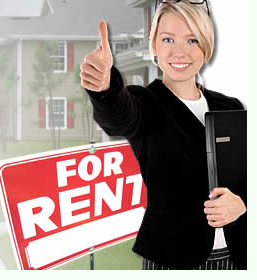 According to a report on CNNMoney.com, home builders had a terrible month in October, with new home sales falling 80% from the top of the boom five years ago. Commerce Department figures show sales dropped to an annual pace of just 283,000, down 8.1% from September.
According to a report on CNNMoney.com, home builders had a terrible month in October, with new home sales falling 80% from the top of the boom five years ago. Commerce Department figures show sales dropped to an annual pace of just 283,000, down 8.1% from September.
Last October, the annualized sales rate was 430,000. This year’s figure represents a whopping 28.5% decline from 12 months ago. Experts had predicted 2010 sales in October to be around 314,000—and were surprised by the dismal showing.
The peak pace was set in July 2005, at 1.4 million sales, and despite attractive mortgage rates, sales remain sluggish as 2010 comes to a close. The total number of homes on the market has dropped 20% since October, 2009.
First-time buyers were more likely to jump into homeownership, without the burden of selling an existing home. Getting a mortgage is still a challenge, and many potential buyers are unable to obtain financing.
The chief economist for the National Association of Home Builders (NAHB) blames the lower home sales figures on a drop in the number of people forming households. Unemployment and the slow economy mean people are staying at home with their parents longer, moving in with friends, or not getting married.
Individuals who cannot get financing to buy a home, and those unwilling to risk taking on a long-term situation like homeownership in this shaky economy will continue to turn to the rental market. For many, renting continues to be a more viable option—especially with shorter-term leases. Landlords are responding by becoming more flexible with six-month or even month-to-month leases to accommodate changing needs.
Posted by Teresa on November 20, 2010 under Tenant Credit Checks, Tenant Screening & Background Checks | 
 When it comes to filling a rental vacancy, most landlords are happy to have several applications to choose from. But sometime, you don’t have a clear “winner” among your potential tenants. As the economy continues to slog along and unemployment shows no signs of easing up, it’s possible that the pool of potential tenants will just keep declining in quality.
When it comes to filling a rental vacancy, most landlords are happy to have several applications to choose from. But sometime, you don’t have a clear “winner” among your potential tenants. As the economy continues to slog along and unemployment shows no signs of easing up, it’s possible that the pool of potential tenants will just keep declining in quality.
What does a landlord do when the only applicants for a rental property have low income, no job, shaky references or no clear source of income?
The first thing to take a look at is each tenant’s credit history. If the applicants pay their bills on time, they will likely pay their rent on time. If all four have questionable credit checks, then compare incomes. For example, if Mary will be paying 2/3 of her income on the rent, but Jane makes enough to cover rent with just 1/3 of her take-home pay, many landlords would breathe easier signing a lease with Jane.
What about unemployed applicants? Landlords report they are seeing more applicants who report they are unemployed. Most receive unemployment benefits, but as everyone knows, they run out. Is an unemployed applicant a definite “no?” Not for some landlords. Devin says he checks other sources of income, such as child support and disability payments. If unemployment is a potential tenant’s sole source of income, he will typically deny the lease application.
For potential tenants who are self-employed, it’s not always easy to prove income. Ask for tax returns, bank statements, and several references—including, of course, former landlords. Money in the bank is a good indicator that the tenant lives below his or her means and knows the value of having cash reserves. And, note that the income reported to the IRS may or may not be indicative of the individual’s true income.
When landlords feel pressured to sign a lease with a less-than-perfect credit risk, it’s sometimes a little less painful to make it a six-month term rather than a full year’s lease. If the rent has been paid on time, you can always extend it for another six months. If not, it’s possible that the pool of potential tenants will have improved in six months.
Posted by Teresa on November 16, 2010 under Landlord Paperwork and Forms, Landlord Tips | 
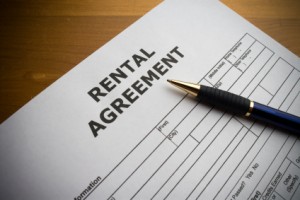 If you’re a new investment property owner, starting out with all your paperwork in place is a must-do. That means compiling a lease agreement before you show your rental property to a prospective tenant—no matter how badly you want or need to rent it.
If you’re a new investment property owner, starting out with all your paperwork in place is a must-do. That means compiling a lease agreement before you show your rental property to a prospective tenant—no matter how badly you want or need to rent it.
Depending on where you live or where your rental property sits, you’ll have specific requirements unique to that state or locality. Be sure to familiarize yourself with the requirements of your state. But in general, the same provisions apply to most residential lease agreements no matter where the property is located. Most important: you need to be sure your lease agreement protects your property, your other tenants, and your business and personal resources.
Here’s a handy list of important provisions to include in a lease agreement:
- Legal Description of the leased premises: Be thorough. Include address, apartment number, city, state and zip code
- Term of Lease, including starting and ending date, with a provision to terminate early in accordance to provisions of the lease;
- Use and Occupancy: Explain how the property may be used (i.e. “for residential purposes”) and a list of names of authorized occupants.
- Rent Payment: State the amount of the rent, how it is to be paid, and penalties for late payments and insufficient funds. Consider a statement that no partial rent payments will be accepted (to avoid any problems if eviction becomes necessary).
- Security Deposit: state the amount of the deposit due upon signing the lease, as well as conditions for return of the security deposit.
- Default: Explain events of default and remedies.
- Utilities: State who pays for which utilities, including gas, telephone, cable, internet, electricity, water, sewer and trash pickup.
- Covenant of Quiet Enjoyment: This explains that the tenant, upon fulfilling his or her obligations under the lease, may peaceably and quietly enjoy the premises without interference by the landlord or a representative thereof.
- Assignment or Subletting: State whether or not the tenant is allowed to assign the lease or sublet the property, and if so, set the conditions under which they may.
- Pets: State whether or not pets are allowed and any restrictions related to type, size, breed, number, etc. Also include the amount of any required pet deposit or fee and conditions for return at the end of the lease.
- Maintenance, Damage and Alterations: States what maintenance the property owner is responsible for, what the tenant is required to do to maintain heating and plumbing systems, when routine maintenance inspections will be conducted, conditions under which the property owner may enter the unit for emergency repairs, and what alterations (paint, for example) are allowed.
- Insurance: Explain what type and level of renter’s insurance is required, if any.
- Abandonment: Defines what may be considered abandonment of the property by the tenant, and the landlord’s rights when it occurs.
- Right to Enter Premises: States when and under what circumstances the property owner or representative will be allowed to enter the rental unit, i.e., number of hours or days of notice.
Other notices, indemnities and covenants are likely to be required in a particular state or by your attorney. It’s always best to have legal counsel review your residential lease prior to using it.
Any forms or information provided by E-Renter USA is not intended to replace legal advice. You are advised to consult an attorney in your area, and to check all local and state regulations.
Posted by Teresa on November 9, 2010 under Rents and Deposits | 
 Would you like to eliminate the need to deposit rent checks? How tired are you of hearing excuses for late rent payments? Want to make it easier for your tenants to pay their rent on time?
Would you like to eliminate the need to deposit rent checks? How tired are you of hearing excuses for late rent payments? Want to make it easier for your tenants to pay their rent on time?
Consider online rent collection. After all, if you already pay your bills online—it makes sense to use this technology for your rental income, too. And if you asked your tenants, they’d probably vote in favor of online rent payment.
Five Online Rent Payment Services:
- SmartRentOnline.com: Fees are limited to $2 per transaction; no monthly or setup fees are charged. This service allows you to choose who pays the transaction fee: you, your tenants, or a 50/50 split. Tenants set up their bank account information and rent funds are transferred through Automatic Clearing House (ACH) transactions to your bank. Auto-payment means the tenant doesn’t need to worry about it—rent is deducted on the same day of the month, every month. Or, tenants can choose manual payment with reminder emails.
- Simplify’em Pay Rent: With this awkwardly-named service, $5 per tenant per month, gets you get unlimited transactions, tenant billing, and detailed reports. Full income and expense tracking is available to integrate with the company’s property management software.
- RAMSrent offers landlords and property managers a portal through which tenants can apply for housing and pay rent. Tenants may choose to pay by check, Visa, or MasterCard, with a discount on convenience fees.
- PayourRent.com also allows tenants to set up automatic rent payments through e-check or credit card. It offers additional features, too, such as online rental application and maintenance requests, plus a portal to connect all utilities (electric, gas, cable, internet and more) through one interface. You can even post announcements for tenants to see when they check in to pay their rent. There are no setup fees and no monthly fees for 10 or more transactions per month. Multiple bank accounts are okay, too.
- PayClix.com is a secure site with no monthly fees and full reporting, such as email notification each time a payment is made. Landlords and property managers can choose to accept or reject each payment. This eliminates the issue of accepting partial rent payments from tenants, which can complicate eviction proceedings.
Eliminating the hassle of collecting rent checks could be worth the fees involved in online rent payment services. Check out the sites above (none of which is affiliated with E-Renter.com) and see if there is one that fits your needs!
Pre-screen all tenants as part of your standard application process. Background and credit checks will help ensure you rent to qualified tenants. For more landlord resources, including forms and information on tenant screening, turn to E-Renter.com.
 A recent case in Florida shows the U.S. Department of Housing and Urban Development (HUD) has little tolerance for racial discrimination against tenants. In this case, HUD charged the owners of a single-family home in Gibsonton, FL, with violating the Fair Housing Act (FHA). The charges include engaging in discriminatory housing practices for reneging on an agreement to rent the house to a woman and her children because they are African American. It also includes charges that the owners used racial slurs when referring to and addressing the family.
A recent case in Florida shows the U.S. Department of Housing and Urban Development (HUD) has little tolerance for racial discrimination against tenants. In this case, HUD charged the owners of a single-family home in Gibsonton, FL, with violating the Fair Housing Act (FHA). The charges include engaging in discriminatory housing practices for reneging on an agreement to rent the house to a woman and her children because they are African American. It also includes charges that the owners used racial slurs when referring to and addressing the family.








